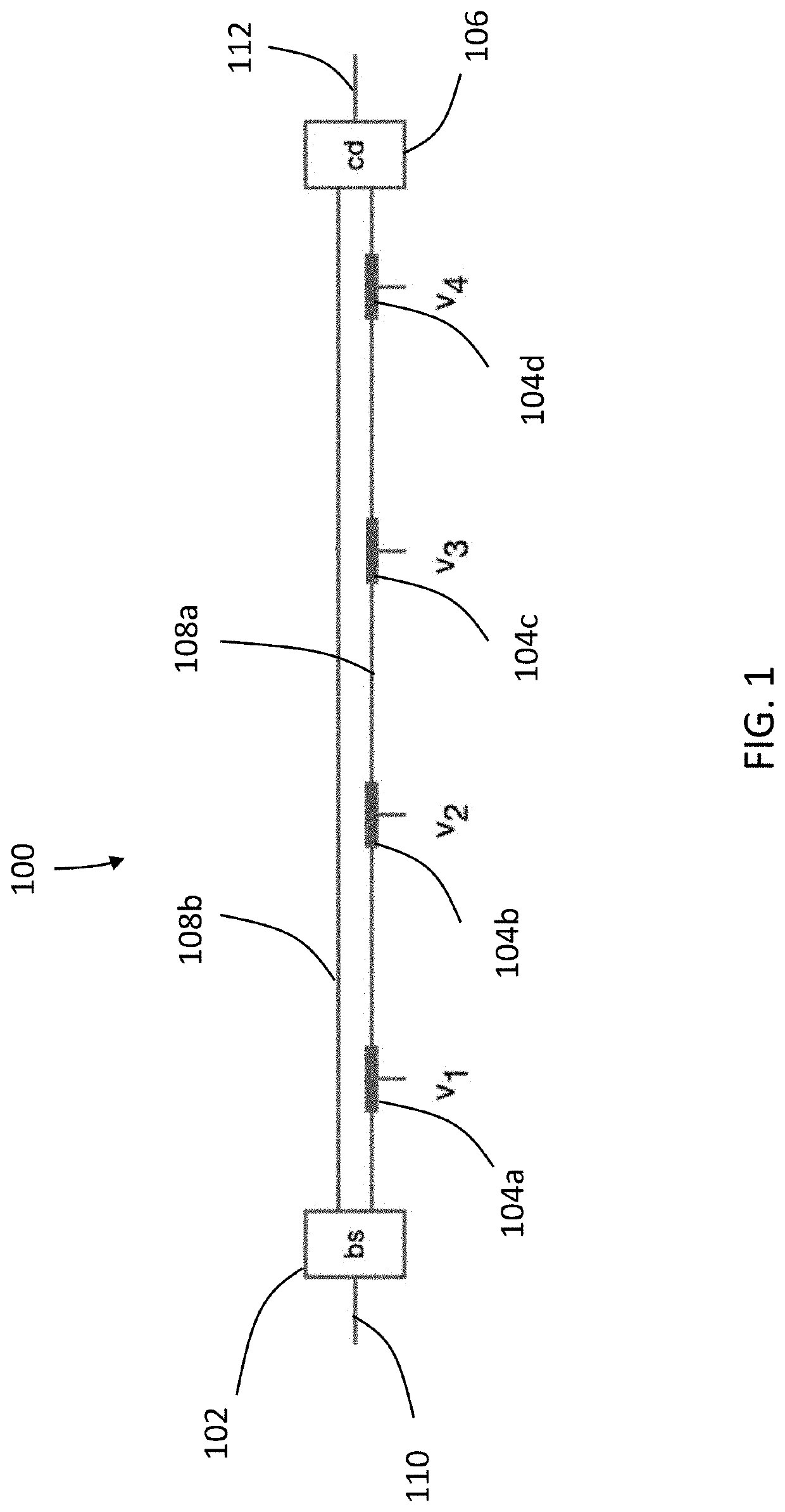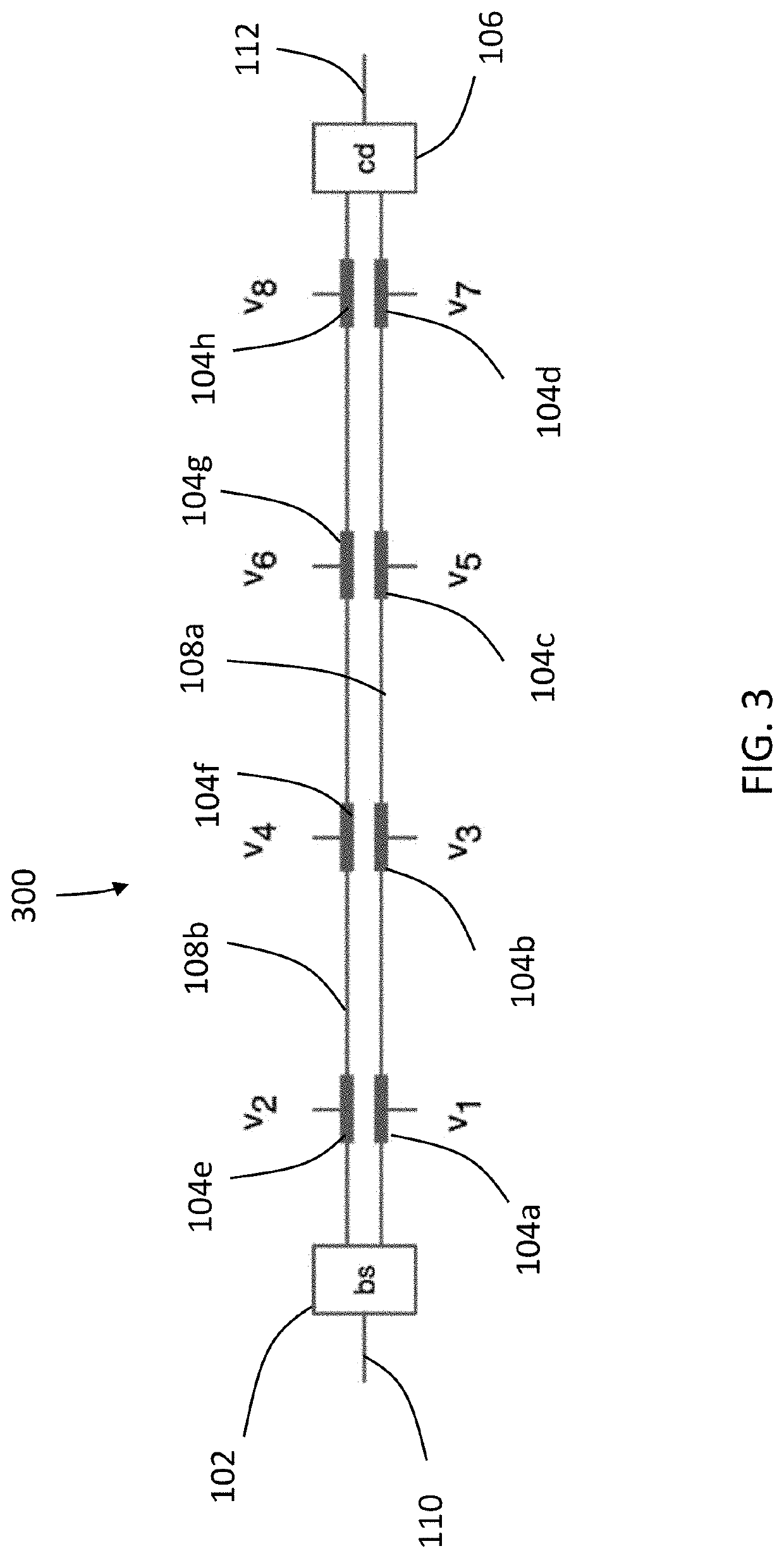Residue number system in a photonic matrix accelerator
a photonic matrix accelerator and number system technology, applied in the field of photonic processors, can solve the problems of power and/or speed limitations of conventional electronic computer processors
- Summary
- Abstract
- Description
- Claims
- Application Information
AI Technical Summary
Benefits of technology
Problems solved by technology
Method used
Image
Examples
Embodiment Construction
[0036]A photonic processor uses light signals and a residue number system (RNS) to perform calculations. The processor sums two or more values by shifting the phase of a light signal with phase shifters and reading out the summed phase with a coherent detector. Because phase winds back every 2π radians, the photonic processor performs addition modulo 2π. A photonic processor may use the summation of phases to perform dot products and correct erroneous residues. A photonic processor may use the RNS in combination with a positional number system (PNS) to extend the numerical range of the photonic processor, which may be used to accelerate homomorphic encryption (HE)-based deep learning.
[0037]The disclosure provides a photonic matrix accelerator implementing a residue number system (RNS). Implementing an RNS within a photonic matrix accelerator may provide the ability to compose higher precision matrix-vector multiplications from lower precision multiplications and the ability to perfo...
PUM
 Login to View More
Login to View More Abstract
Description
Claims
Application Information
 Login to View More
Login to View More - R&D
- Intellectual Property
- Life Sciences
- Materials
- Tech Scout
- Unparalleled Data Quality
- Higher Quality Content
- 60% Fewer Hallucinations
Browse by: Latest US Patents, China's latest patents, Technical Efficacy Thesaurus, Application Domain, Technology Topic, Popular Technical Reports.
© 2025 PatSnap. All rights reserved.Legal|Privacy policy|Modern Slavery Act Transparency Statement|Sitemap|About US| Contact US: help@patsnap.com



